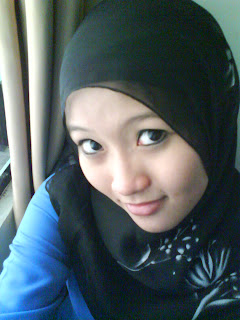Each “egg” is released into the abdominal cavity near the opening of one of the oviducts or Fallopian tubes. Cilia in the oviduct set up currents that draw the egg in. If sperm are present in the oviduct (if the couple has recently had intercourse), the egg will be fertilized near the far end of the Fallopian tube, will quickly finish meiosis, and the embryo will start to divide and grow as it travels to the uterus. The trip down the Fallopian tube takes about a week as the cilia in the tube propel the unfertilized “egg” or the embryo down to the uterus. At this point, if she had intercourse near the time of ovulation, the woman has no idea whether an unfertilized “egg” or a new baby is travelling down that tube. During this time, progesterone secreted by the corpus luteum has been stimulating the endometrium, the lining of the uterus, to thicken in preparation for possible implantation, and when a growing embryo finally reaches the uterus, it will implant in this nutritious environment and begin to secrete its own hormones to maintain the endometrium. If the “egg” was not fertilized, it dies and disintegrates, and as the corpus luteum also disintegrates, its progesterone production falls, and the unneeded, built-up endometrium is shed.
The uterus has thick, muscular walls and is very small. In a nulliparous woman, the uterus is only about 7 cm long by 4 to 5 cm wide, but it can expand to hold a 4 kg baby. The lining of the uterus is called the endometrium, and has a rich capillary supply to bring food to any embryo that might implant there.
The bottom end of the uterus is called the cervix. The cervix secretes mucus, the consistency of which varies with the stages in her menstrual cycle. At ovulation, this cervical mucus is clear, runny, and conducive to sperm. Post-ovulation, the mucus gets thick and pasty to block sperm. Enough of this mucus is produced that it is possible for a woman to touch a finger to the opening of her vagina and obtain some of it. If she does this on a daily basis, she can use the information thus gained, along with daily temperature records, to tell where in her cycle she is. If a woman becomes pregnant, the cervical mucus forms a plug to seal off the uterus and protect the developing baby, and any medical procedure which involves removal of that plug carries the risk of introducing pathogens into the nearly-sterile uterine environment.
The vagina is a relatively-thin-walled chamber. It servs as a repository for sperm (it is where the penis is inserted), and also serves as the birth canal. Note that, unlike the male, the female has separate opening for the urinary tract and reproductive system. These openings are covered externally by two sets of skin folds. The thinner, inner folds are the labia minora and the thicker, outer ones are the labia majora. The labia minora contain erectile tissue like that in the penis, thus change shape when the woman is sexually aroused. The opening around the genital area is called the vestibule. There is a membrane called the hymen that partially covers the opening of the vagina. This is torn by the woman’s first sexual intercourse (or sometimes other causes like injury or some kinds of vigorous physical activity). In women, the openings of the vagina and urethra are susceptible to bacterial infections if fecal bacteria are wiped towards them. Thus, while parents who are toilet-training a toddler usually wipe her from back to front, thus “imprinting” that sensation as feeling “right” to her, it is important, rather, that that little girls be taught to wipe themselves from the front to the back to help prevent vaginal and bladder infections. Older girls and women who were taught the wrong way need to make a conscious effort to change their habits.
At the anterior end of the labia, under the pubic bone, is the clitoris, the female equivalent of the penis. This small structure contains erectile tissue and many nerve endings in a sensitive glans within aprepuce which totally encloses the glans. This is the most sensitive point for female sexual stimulation, so senstiive that vigorous, direct stimulation does not feel good. It is better for the man to gently stimulate near the clitoris rather than right on it. Some cultures do a procedure, similar to circumcision, as a puberty rite in teenage girls in which the prepuce is cut, exposing the extremely-sensitive clitoris. There are some interesting speculations on the cultural significance of this because the sensitivity of the exposed clitoris would probably make having sexual intercourse a much less pleasant experience for these women.









